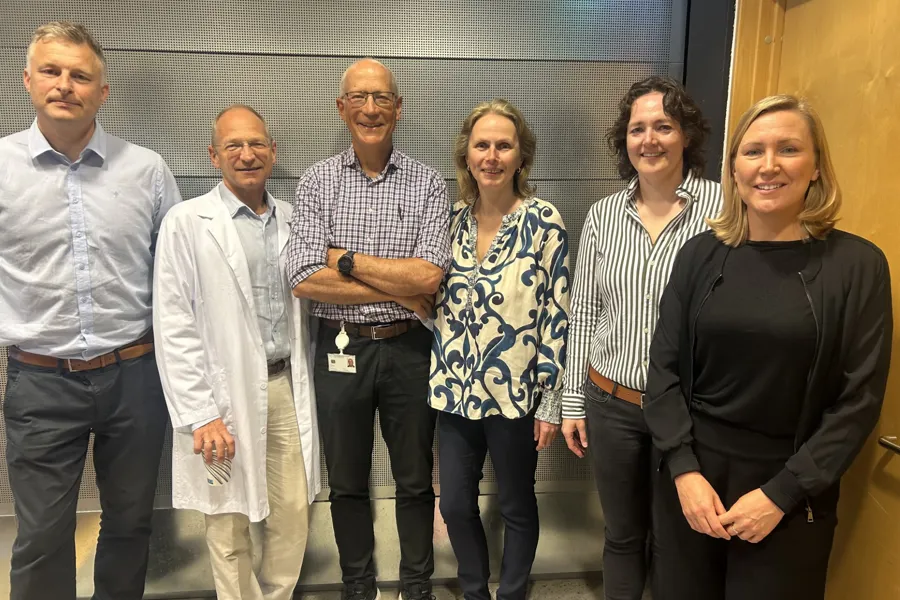Diving into the diverse functions of the hub molecule PDGFRB
The 2nd Mohn Synergy Symposium
On May 19th, the second Mohn Synergy Symposium took place – an event that brought together researchers from various disciplines to share knowledge and insights about the molecule PDGFRB. This molecule is a receptor that has been shown to play a key role in several serious medical conditions, including neurodegenerative diseases, childhood blindness, and various forms of cancer.

The symposium served as an important arena for idea exchange and academic inspiration, offering participants the opportunity to explore how interdisciplinary research can lead to new breakthroughs.
All the projects presented at this year’s event are supported by the Trond Mohn Research Foundation, which, through its commitment, enables groundbreaking research with the potential for significant societal impact.
Christian Vedeler, Head of the Department of Clinical Medicine at the University of Bergen, opened the symposium. This was followed by welcome remarks from Nicholas Nunn, CEO/CFO of the Trond Mohn Research Foundation, and Einar K. Kristoffersen, Head of the Mohn Research Centre for Regenerative Medicine (MRCRM). Both emphasized the importance of interdisciplinary research and curiosity-driven initiatives.
PDGFRB from multiple perspectives
The main part of the program featured three scientific presentations, each shedding light on PDGFRB from a different angle:
Henriette Aksnes, recipient of a Trond Mohn Starting Grant and head of the research group MemBrain, gave a talk titled: PDGFRB in the Context of Brain Calcification. Her project investigates how PDGFRB may be involved in brain calcification—an important factor in understanding several neurological conditions.
Cecilie Bredrup, project leader at MRCRM, presented: The Role of Temperature on PDGFRB Gene Variants in Human Disease. She highlighted an intriguing perspective on how external body temperature may influence the activation of different PDGFRB gene variants. This could be key to understanding why similar mutations in the same gene can lead to different disease outcomes in different patients.
Carina Strell, also a recipient of a Trond Mohn Starting Grant, presented her work on: Mapping Active PDGFRB Signaling in Diagnostic Tissue Sections. Her project focuses on visualizing and mapping where and how PDGFRB is active in tissue samples—with the goal of applying this knowledge in the diagnosis or treatment of various cancers.
Collaboration and knowledge sharing
The speakers, their research teams, and the organizers continued their discussions on PDGFRB and opportunities for collaboration and knowledge exchange over a pleasant lunch.
The second Mohn Synergy Symposium in the series was organized by the Bergen Stem Cell Research Centre (BSMS, UiB) and MRCRM (Haukeland University Hospital and UiB). The seminar series was developed from an idea by Gyrid Nygård, Chair of the Board and Senior Researcher at BSMS, and Elise Aasebø, Coordinator at MRCRM.